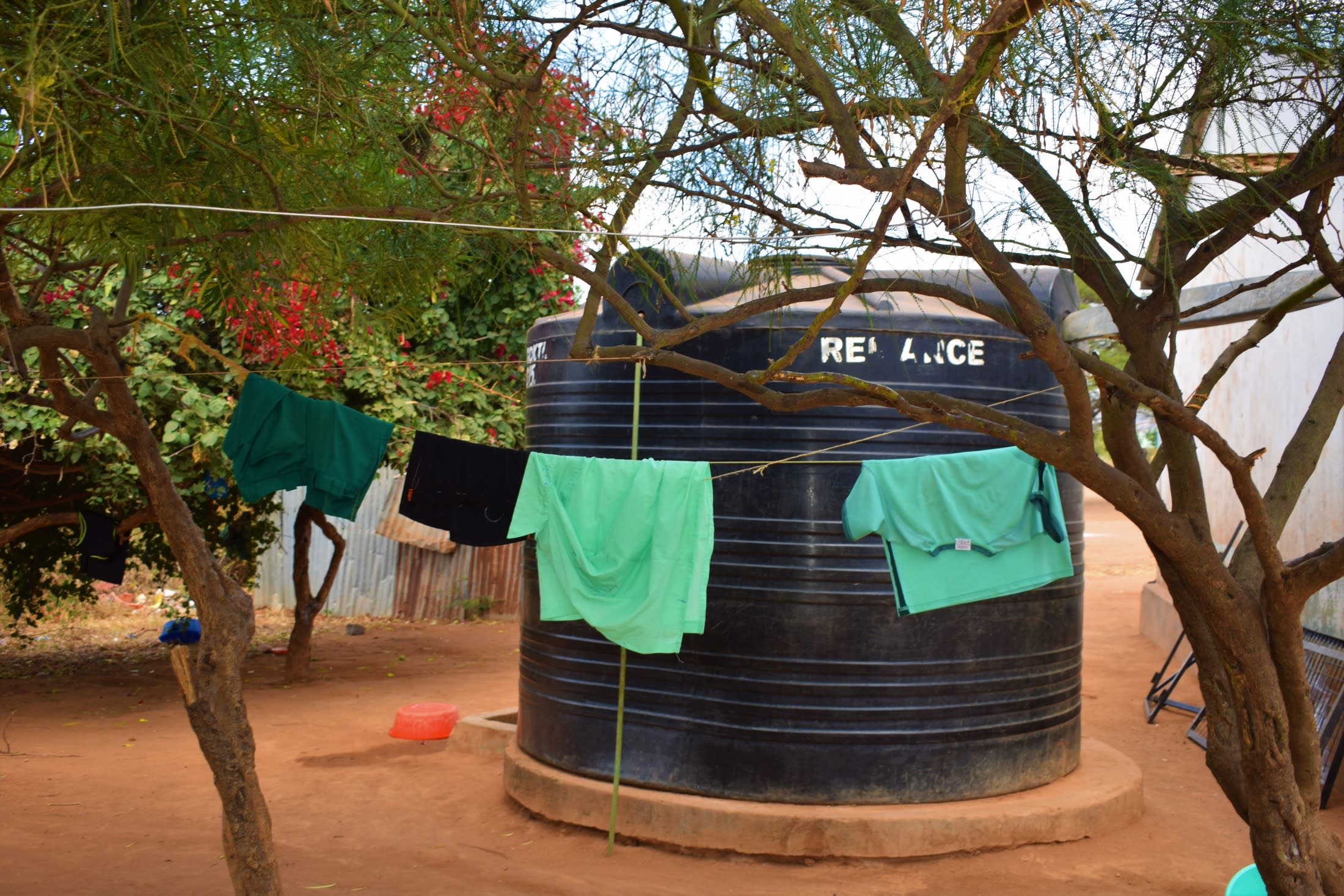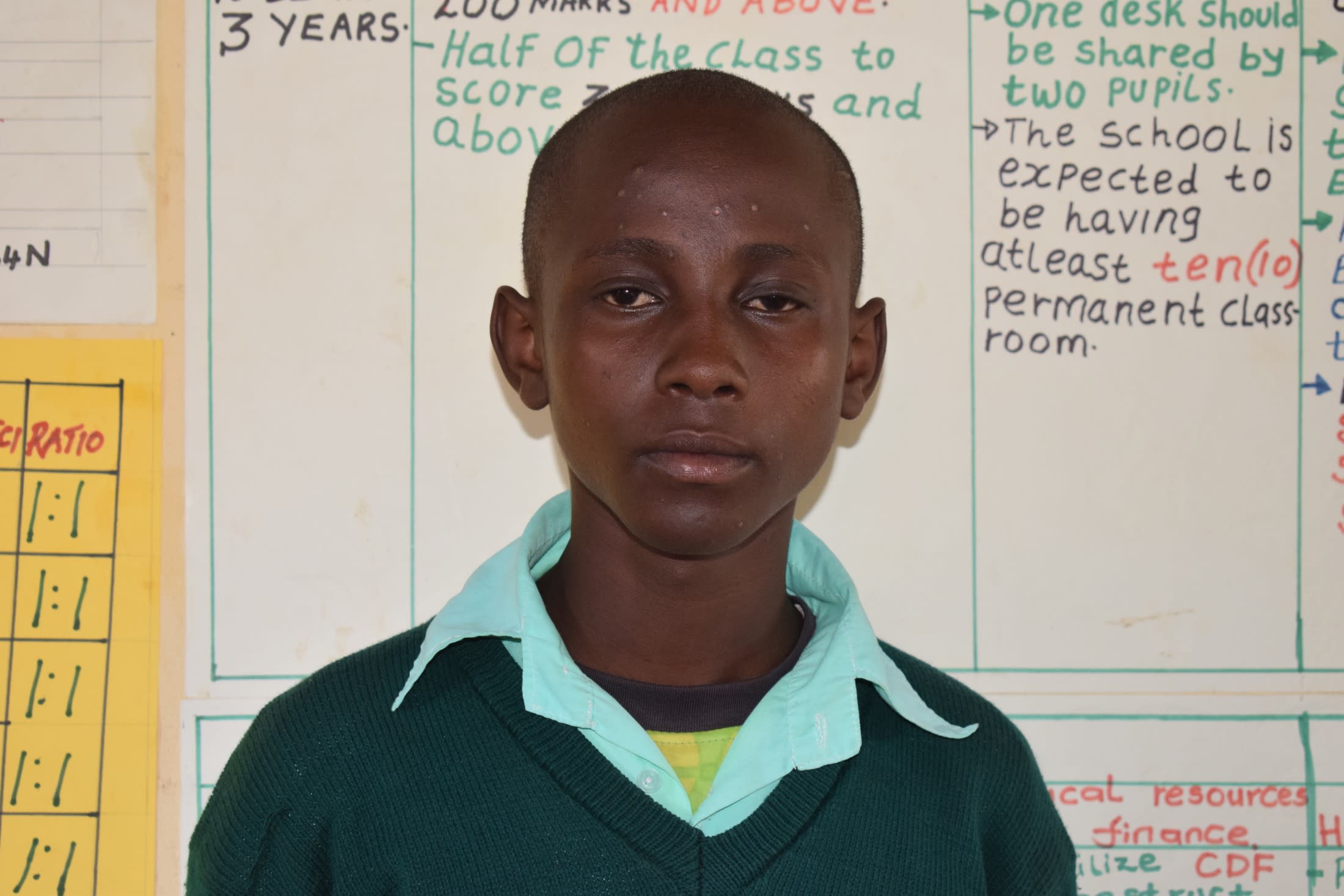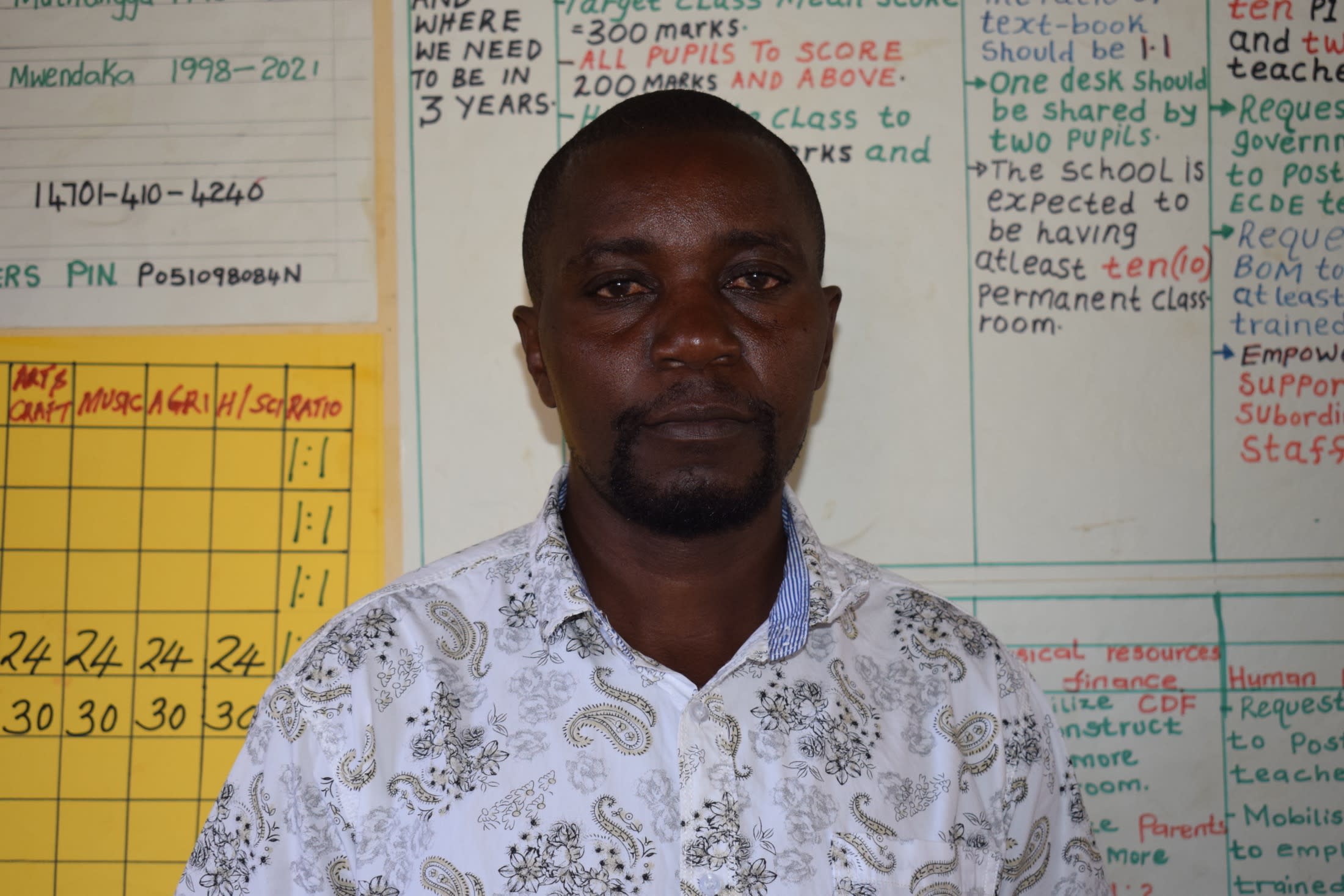Itinda Primary School relies on unreliable municipal water for the water needs of its 285 students and 15 staff members. The water comes through piping connected to a small holding tank, but the tank often sits empty.
"They have piped water in the school, [but] it is not reliable," said our field officer, Jefferson Mutie. "Sometimes a week or two can pass without a drop of water in the pipes. The water volume is also very low, and students are forced to make queues whenever it is time to fetch water. Students have to sacrifice their playing time to make up for water as the process is demanding [and] other activities are delayed when there is no water in the school."

When the pipes run dry, the other most relied upon option is to send students to local rivers to collect water, but it is not an easy or quick task.
"The water is very little," said 14-year-old Benjamin S. (seen below). "It cannot serve us for two days consecutively. When the water dries completely, we are forced to fetch water from [the] rivers Kavata and Wangutu, which are very far [away. Actually, it's a three-hour walk to and back."

Collecting water from the rivers exhausts students and forces them to miss valuable learning time. But the lack of sufficient water also leads to other issues.
Since Itinda is a boarding school, the pupils living on campus often suffer the most. They go long periods without bathing or being able to wash their clothes, which is demoralizing. Their dormitories are only swept and not mopped because of the water scarcity.
"I do not clean my clothes regularly and well due to the water shortage in the school," said Benjamin.
And the school's water crisis is also overwhelming to teachers.
"I have had students being taken to the hospital over and over again because of water-related issues," said 45-year-old headteacher David Musya (seen below). "Personally, I look at the pupils in my school, and I get worried so much about what I will give to them when there is no water in the school."

The school administration tries to alleviate some of the water shortage by paying water vendors to deliver water, but this isn't really a solution. The vendors are as unreliable as the piped water and costly, too, which leaves the school without sufficient resources to improve other programs.
"[The] water payment gives me a migraine," said Mr. Musya.
In the past, the school has tried to establish an agricultural program and improve the school environment by planting trees, but without water, the saplings dried up quickly. Agricultural students must forego that area of learning.
Installing a very large rainwater tank should allow enough water to be collected and stored so that pupils will have access to clean drinking water that assures them of good health. With the water, students can practice good personal hygiene even throughout the dry season and improve the school's overall hygiene and sanitation. The money previously used to purchase water will then give students access to necessary academic programs to strengthen their futures.
Rain Tank
We will build a 104,000-liter rain tank for this school, making the others look tiny in comparison. Because of how rarely it rains in Southeastern Kenya, this tank's large volume is designed to store as much water as possible during the seasonal rains, making more water available through the dry months. This water will benefit the students, teachers, and supplementary staff.
Parents will mobilize the materials needed for construction, including sand, stones, and water. They will also lend their strength and time to help with the construction. We will complement their materials with a skilled artisan to lead the project in addition to providing the tools, lumber, metal, cement, and gutter system.
As soon as the tank has time to cure, it can begin collecting rainwater for the school's use.
Training
We will train students and staff on sanitation, hygiene, and other topics for 1 day. Those in attendance will form a school health club that will promote good hygiene and sanitation practices both at school and at home. They will learn all of the steps to proper handwashing, how to treat water, and how to keep their environment clean. The school will also be taught how to best oversee and maintain their new rain tank and handwashing stations.
Handwashing Stations
A total of 3 handwashing stations will be installed upon the project’s completion and before training. These are 1,000-liter plastic tanks fitted with 3 taps each, allowing 9 students to wash their hands at once. The student health club and school management will be responsible for making sure the tanks are filled with water and that a cleaning agent such as soap or ash is always available.




 Rainwater Catchment
Rainwater Catchment
 Rehabilitation Project
Rehabilitation Project




























